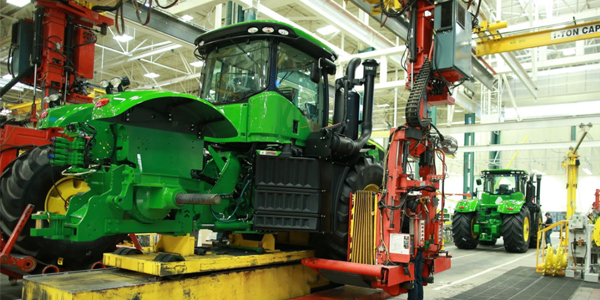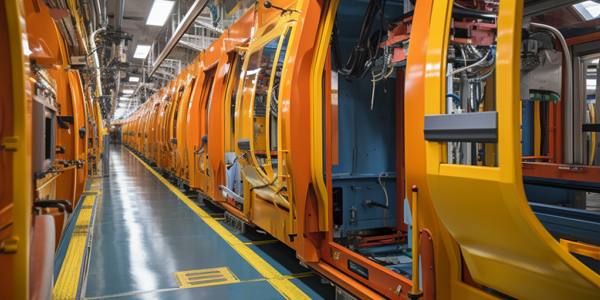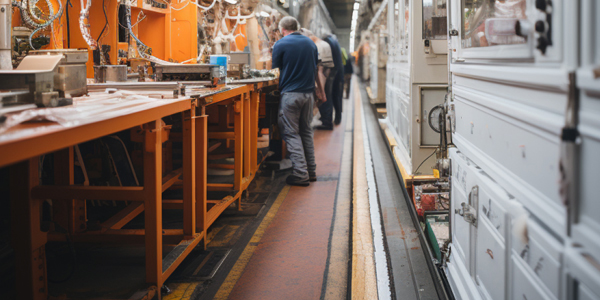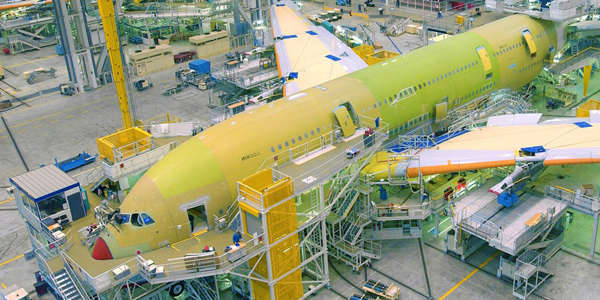Automation in liquid finishing
Automation is changing the way we work, essentially making our lives a lot easier. From paint mixing to coating applications, from real-time monitoring to complex calculations, discover how automation can transform your paint line processes.
Benefits of automating liquid finishing
Boost production efficiency
Automation delivers fast and consistent results. It reduces manual labour and thereby saves time. For example, optimising equipment uptime, reducing unexpected downtime or simply making the process faster.
Enhances quality
Human workers can get tired or lose focus which can cause deviations in coating thickness and lead to colour changes. An automated system remains steady at all times, which increases consistency and quality.
Saves costs
Automated systems can provide an excellent ROI by taking over or complementing human operators. Moreover, automation can lead up to 30% material savings compared to manual painting.
Provides traceability & transparency
Analyse and optimise every step of your spraying process by collecting data through real-time monitoring. You can, for instance, track errors in paint flow to prevent costly rework. Or you can track VOC emissions to avoid costly legal penalties.
Increases production capacity
Automation enables you to spray around the clock and speed up production considerably. It can decrease downtime, for instance by lowering the need for regular cleaning sessions through minimising paint accumulation.
Improves safety
By automating processes like paint mixing and spraying you help your workers avoid hazardous work conditions. For example, you can decrease their exposure to fumes and other aerosols using an automatic paint line.
Wondering if these benefits can apply to you?
Automation myths debunked
Too expensive
While the upfront costs can be high, initial investments in automation typically have high returns. You can also start small and spread the cost over time.
Too difficult
While the upfront costs can be high, initial investments in automation typically have high returns. You can also start small and spread the cost over time.
Only useful for larger companies
Company size is not the deciding factor. Whether or not you have complex or large-scale processes, automation can be useful for you.
Everything needs to be automated at once
Automation is scalable and starter-friendly. Every step of the paint process can be automated separately.
People will lose their jobs
It is true that automation impacts a workforce, but people will always be needed. However, they will need training to (co)operate automated systems.
Thinking of another myth?
Can you think of any other arguments against automation? Graco’s experts will happily discuss them with you.
Automation in liquid finishing

Agriculture and construction equipment manufacturing
In the agriculture sector, equipment faces rigorous operation and harsh conditions. Think about the corrosion caused by the regular exposure to plant and soil moisture, fertilisers and pesticides. Without proper coating, the welded components will rust and wear down more quickly.
Manufacturer of agricultural machinery installs Graco 2KS paint supply system to meet strict quality standards
Transportation manufacturing (truck, trailer, bus and train)
The complexities of vehicle designs, with all the parts and materials, demand precise application techniques. And the high-volume production requires efficient and consistent processes. The solution is a combination of advanced technology, expert knowledge and thorough process control.
Railcar manufacturer saves paint and increases productivity with Graco


General manufacturing
In general manufacturing, the diverse range of products, materials and dimensions demands adaptable application methods and intelligent process control to ensure consistent and high-quality coatings. For example for furniture, metal parts and wood finishing.
Wood cabinet manufacturer meets production goals with ProMix PD2K automatic proportioner
Aerospace and defence equipment manufacturing
Coatings for aerospace components need to be more than decorative. They have to be protective, functional and safe. For example, they should be able to withstand temperature fluctuations. This requires advanced technology, strict quality control and compliance with rigorous industry standards.
Ready, steady and take off with Airbus A380

Liquid finishing automation: what’s involved?
There are essentially four subprocesses in a paint line: the paint kitchen, the metering & mixing, the spraying and the monitoring. Each subprocess can be automated gradually. Curious about what that means and what you can gain from it? This infographic shows it at a glance.
Automation:
How to get started
E-book: automation in liquid finishing
This step-by-step automation guide will explain what paint line automation is, why you might need it and how you can start automating today.
Self-scan: Find out if automation is for you
‘Can automation tackle my challenges?’ ‘Is it worth automating if I spray only 1 to 2 hours a day?’ Take our free self-scan to find out.
Automation in liquid finishing
Guidance
Every step of your process is covered and well-implemented. All relevant parties are involved to guide you throughout the whole process.
Open model
You can rest assured knowing that your vendors, manufacturers and integrators work together to adapt the new system to your existing equipment.
Always nearby
Wherever you are located, you have access to the same solutions and services worldwide.
Top-tier technology
You can count on top-tier and robust solutions and innovative products, with stocks of spare parts available worldwide.
The biggest product range
From paint mixing to application, you can enjoy a wide variety of solutions for your liquid finishing processes.
Local support
Benefit from a global service with local support, including training in your local languages.
